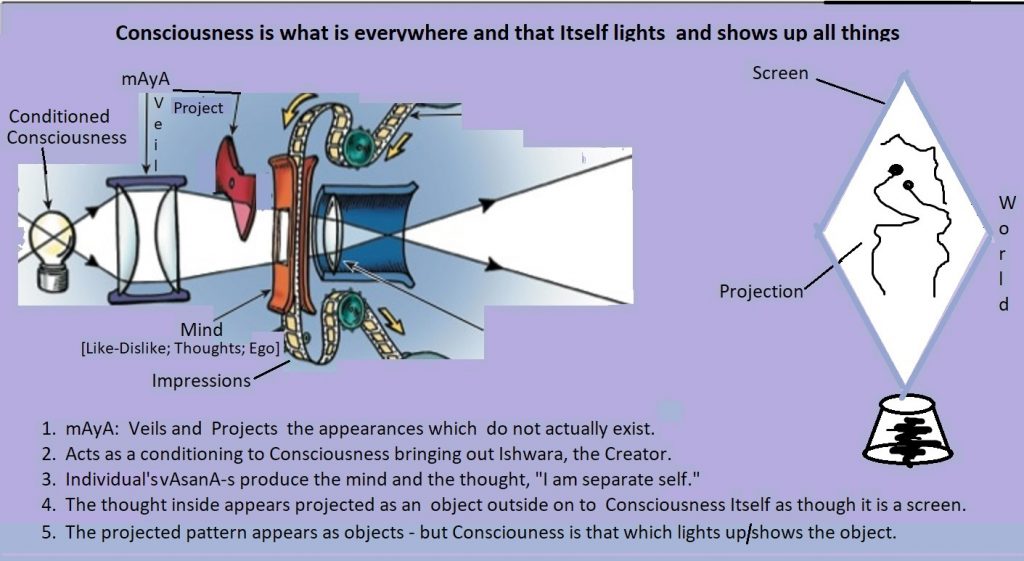The recent post by Ramesam – Ignorance goes, but mAyA remains? – continues to draw discussion. It has now reached nearly 50 comments! Ramesam’s last comment kindly referred to Gaudapada’s kArikA 1.17 and, looking this up in my book ‘A-U-M: Awakening to Reality’, I found that I had put together a very useful post to the Advaitin E-group back in 2009. Accordingly, it seems appropriate to post this here and, since it is longer than a simple comment, I am starting a new thread.
*****
A favorite topic on the Advaitin discussion group (http://groups.yahoo.com/group/Advaitin/) (where I am one of the moderators) has been what exactly happens when a person is enlightened or ‘gains mokSha’. A popular, although somewhat incomprehensible, belief is that the world somehow ‘disappears’; that, for the j~nAnI, there simply is no longer any duality. Quite how the j~nAnI (apparently) continues to eat, drink and converse is not adequately explained by those who hold such a view. But Gaudapada approaches it from a different and even more dramatic angle. Continue reading

